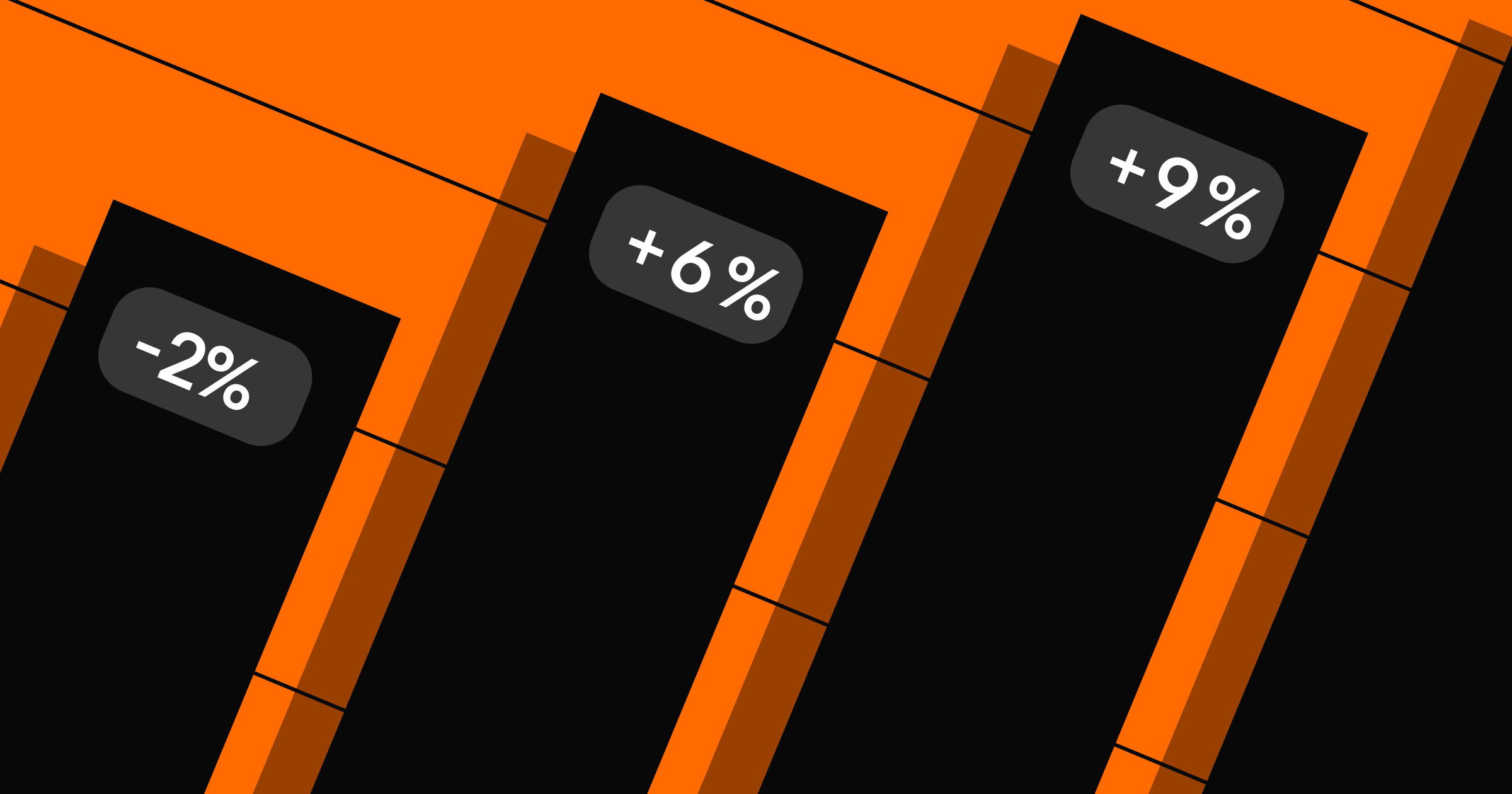Business intelligence (BI) reporting enables organizations to make effective, data-driven decisions.
In an increasingly data-driven world, data visualization is crucial to getting and staying ahead in every industry. It’s essential for measuring performance, demonstrating value, and optimizing strategies.
And as data acquisition methods and the results become increasingly sophisticated, so must your reporting methods. That’s why business leaders invest in modern, cutting-edge BI reporting tools that enable them to make better high-level and forward-thinking decisions.
What’s BI reporting?
Business intelligence, or BI, reporting involves translating business analytics reports into intuitive, understandable visuals. These might be graphs, tables, and infographics. The goal is to make the data easier to interpret so business leaders can use it to inform their decision-making.
Typical examples of BI reporting include:
- Performance charts
- Sales graphs
- Predictive models
- Profit and loss statements
Companies have used BI reporting for years, but recent advancements in artificial intelligence (AI) and machine learning (ML) have unlocked new levels of sophistication. Now, BI tools can track many more metrics, combine them into comprehensive reports, and even predict outcomes.
For example, web development teams can track traffic sources, time spent, and conversions. Then, AI tools can combine these metrics into a single report and predict how changes in traffic sources or time spent might affect conversions.
Benefits of BI reporting
Comprehensive BI reporting has become a mainstay in almost every industry, with companies choosing to gather more data than ever. With all these added data points, your analytics will quickly become difficult to read and, therefore, difficult to act on. Good BI reporting translates all these newfound data points into easy-to-read data visualizations.
Here are some more benefits that businesses enjoy after implementing a robust BI reporting process:
- More strategic decisions. A comprehensive dataset including key indicators like shares, customer satisfaction, and market penetration equips you with the knowledge you need to make stronger long-term choices. These real-time and historical data points provide much-needed context for every strategic decision you make.
- Precision. BI reporting is an excellent way to quantify your team’s strengths and weaknesses. Vital information like when individuals are most productive and how efficiently teams work together enables you to correct problems and encourage growth precisely where needed.
- Streamlined operations. The best BI tools, like Tableau and HubSpot, can aggregate all your data into one central platform and help you interpret it. This reduces wasted time setting up meetings or sending emails to request reports from various business units.



















The 2024 State of the Website
Discover key challenges today's marketing teams are facing, as well as opportunities for businesses in 2024.
3 types of BI reporting
There are three main categories of BI reports: performance reports, predictive forecasting, and augmented analysis. The first two work hand in hand, and it takes a healthy serving of both to make for a robust dataset. The third — augmented analysis — is a relatively new term. Let’s explore how they all work together.
1. Performance reports
Performance reports focus on the past and present to measure how well your business achieves its goals. They showcase historical and real-time data to give business leaders an understanding of trends in areas like spending, profits, and growth.
Typical performance report examples are website performance monitors, hiring or turnover rates, and market share analytics.
Most BI reports fall into this category and provide the metrics necessary to form the other two reporting types.
2. Predictive forecasting
Predictive forecasts focus on the future. They rely on performance reports to predict a given strategy’s potential outcome. Many predictive forecasts track marketplace competition and economic changes because these provide crucial, high-level context for strategic business decisions.
Typical examples of predictive forecasts include revenue forecasts, market penetration estimates, and investment potentials. Essentially, any report that relies on historical data to predict the future is a predictive forecast.
3. Augmented analysis
Augmented analysis represents a new frontier in BI reporting. It relies on ML and AI to collect, analyze, and interpret data. The goal is to remove bias and explore novel connections between data points that human analysts might overlook.
Typically, augmented analysis assists the predictive forecasting process, though you might also use it to create performance reports. In either situation, AI allows the reader to use natural language queries to search the data.
This report type is still in its infancy, and major companies like Microsoft and Sisense are still discovering the full potential of augmented analysis.
5 of the top BI tools on the market
Since BI reporting is so integral to business management, there are quite a few tools for it on the market. But the best tools are at the bleeding edge of analytics technology, AI development, and data collection. The following are our recommendations for top-notch data analysis platforms with the most impressive, reliable technology.
1. HubSpot
HubSpot is a customer relationship management (CRM) platform comprising six core products, or hubs, that serve the needs of marketing, sales, customer service, content management, operations, and commerce. Each hub is connected to an underlying CRM database with robust features like automated marketing, an intuitive content management system (CMS), and predictive reporting.
This platform is a powerful tool that you can integrate with Webflow to track web traffic, update your pages, and introduce new features such as a chatbot.
2. Tableau
Tableau is a visual analytics platform that lets you quickly combine data from different sources to create high-quality BI reports. Their software makes accessible yet comprehensive reporting that you can search with natural language queries.
With Tableau, you can analyze or aggregate data from cloud services and big data firms like Salesforce and Oracle. And Tableau was named a leader in the BI software industry by the Gartner Magic Quadrant report and has officially held this position for 11 consecutive years.
3. Sisense
Sisense is a data analytics platform that collects information from multiple sources and enriches it with AI and ML insights. If you’re interested in exploring augmented analytics, this is the platform to use. The 2023 G2 report named Sisense a leader in embedded BI software, and their user reviews are consistently positive.
4. Similarweb
Similarweb analyzes digital traffic to deliver critical insights about your online presence, especially when comparing metrics against competitors.
This platform specializes in measuring website traffic, tracking engagement, and performing market research, so it won’t help you with operational business metrics. But it’s an excellent tool to add to your toolbox if you already have a solution for measuring the things it doesn’t track.
5. Power BI
Power BI is a reporting tool from Microsoft that combines all your spreadsheets and databases into informative visualizations. It features natural language queries, AI capabilities, and enterprise-grade security.
Microsoft built Power BI to scale easily, and they made it compatible with other Microsoft products like Fabric, Teams, and OneLake. It’s an excellent choice if you already use other Microsoft services because it reduces time spent reformatting visuals and converting files.
How to choose the right BI tool
The best BI tools are secure, compatible, and accurate. Here are a few more things to consider when choosing the right tool for you:
- If your business is exclusively online, choose a tool like Similarweb that specializes in tracking and forecasting digital traffic.
- If you’re in an emerging market, a tool like Sisense might be your best bet since it leverages AI and ML to predict outcomes with less historical data.
- If you have a massive dataset, pay close attention to the ingestion speeds of the tool you select. Tableau is an excellent example of one with high ingestion speeds.
Business intelligence reporting best practices
BI reporting is something of an art form. It takes creativity and imagination to visualize a perfect dataset and an understanding of the end user to make your reports relevant and valuable.
To be a data artiste, follow these best practices:
- Be scalable. Always keep scalability in mind when putting together your visualizations. Automate as much of the collating process as possible and keep your formulas open to later additions.
- Avoid overwhelming the reader. Your reports should be relevant, well-organized, and easily read. Avoid data dumping, or giving so much uncontextualized data that it overwhelms readers. Create visually intuitive reports that combine data sources into the fewest possible graphics and use clear headings to label everything. Check out some of our favorite data visualization tools to help.
- Be adaptable. Fine-tune your reports to serve your intended audience’s needs. Ask for feedback and pivot your reporting techniques as needed.
From raw data to informed solutions
Harnessing the power of data is a great way to make intelligent, strategic decisions about your business. The best place to start is to gather the tools and resources you need early to make scaling your BI reporting methods more effortless and affordable later.
To create fast, reliable websites that grow to meet your reporting needs, try Webflow Enterprise. It can help you build scalable, visually stunning websites, and many popular BI reporting platforms integrate with it. Schedule a demo today to see what Webflow can do for you.

Webflow Enterprise
Trusted by over 300,000 of the world’s leading brands, Webflow Enterprise empowers your team to visually build, manage, and optimize sophisticated web experiences at scale — all backed by enterprise-grade security.































